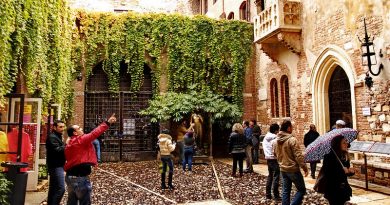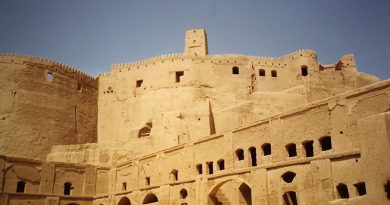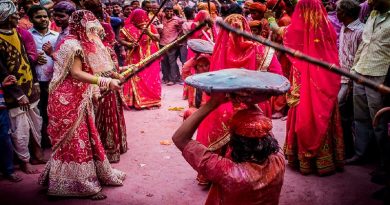Introduction to Delhi
India’s federal capital is a sprawling mega city of over 20 million and counting. 20 million people, 20 million stories. Every Delhiite has a reason for forging their way through one of the fastest growing cities on the planet. The educated and more fortunate ones are here to participate in India’s economic boom, handling the subcontinent’s natural resources and rapidly expanding telecommunications, shaping India’s face on the international stage and engaging in politics. The non-educated, poor and less fortunate ones are here to survive as rickshaw drivers, cleaners, and waiters. For too many, begging is all that’s left to do in India’s wealthy capital; the country’s devastating poverty is just one of the many great challenges it faces in its rapid development.

India borders with Bangladesh, Bhutan, Burma, Nepal, Pakistan and Asia’s biggest powerhouse, China. It is surrounded by the Arabian Sea and the Bay of Bengal, and boasts an impressive 7,000km long coastline. Calcutta and Bombay (now Kolkota and Mumbai) have always been incredibly important seaports for the country; the British Empire reached India by sea, to which India Gate in Mumbai pays tribute. Delhi, on the other end, sits in the central plains of central northern India, no less than 500 miles from the next seaport. Inhabited since the 6th century, it took hundred of years before it made its way into the history book. Its historical birth was at best a strategic necessity, as it was merely a military outpost in the prairies for a long time.
What tipped the scale in favour of Delhi after the Muslim conquest and accelerated its development was its location in the line of attack from north-west, the northern line connection between Lahore, Peshawar, Khyber Pass, and Afghanistan and Central Asia[1]. From this direction, its later Muslim conquerors came and Delhi’s status soared from provincial to epic, from prairie outpost and military garrison to capital and empirical stronghold. It was from Delhi that India would be effectively controlled for years to come, and the Mughal Emperors and later the British Empire would leave their architectural and historical footprints in the city by their exuberant building style and architectural design: Lutyen’s Delhi with the presidential palace, the Red Fort, Humayun’s Tomb and other monuments are the epic pillars of Delhi’s past, and much pales in comparison.
While Delhi’s monuments may be a great way to dive into the city’s past, it is certainly the people, the old and new Delhiites and their meeting points that will tell the story of the city faster and better than any building ever can. Delhi’s bazaars are a feast and sometimes an overload for the human sensory system. Here, Delhi glows and Delhi stinks, but it never fails to impress. Old Delhi’s Chandni Chowk is a legendary place to shop for Indians and Delhiites alike; the narrow streets boast an array of markets such as Dariba Kalan for jewellery, Kinari Bazaar for all tinsel and sequins, and Katra Neel for fabrics. In New Delhi, the Janpath Tibetan Market is just a stone throw from one of the hearts of the cities, Connaught Place, and the Paharganj near New Delhi railway station is a heaven for the backpacking traveller.

The vibrant markets are a traveller’s dream come true and make it even more incomprehensible that the number of gigantic, air-conditioned shopping malls in Delhi has quadrupled in the last years; after all, what could be better than haggling for a colourful sari in the lanes of Chandni Chowk? Yet the most interactive points remain Delhi’s irresistible food markets; as the Delhiites say, if the Indian food is sublime, then Delhi’s food is divine. And so Delhiites eat, plenty and often, every day and every night; sitting, walking and standing up, and the poor man’s food is as cherished as are exquisitely cooked dishes. Connaught Place, Chandni Chowk and Khan Market rank among the favourites and feature hundred of different street food stalls. In this overflow of heavenly food, it is only people scraping food left overs from under benches that remind one that not all of the 1.2 billion people of India can actually participate in the feasts.
Besides being flooded by hundreds if not thousands of newcomers arriving every day in Delhi to make a few rupees and elevate their status from surviving to actual living, the city is even more troubled by the arrival of man’s most modern invention: cars. With 1,400 vehicles being added to Delhi’s streets daily, and the overall rural to urban development push increasing, the city deals with traffic problems of epic proportions. Frankly, crossing Delhi from south to north or west to east, is mildly spoken a journey to hell and back, not least because of the glaringly obvious lack of lanes, driving talent, and odd encounters at traffic lights when diplomatic Mercedes meets cow from the slum. In a survey from 2013/14 Delhi was awarded the unpopular title of “most polluted city in the world”. Proclaimed to be one of the greenest cities in the world, deforestation of its previous lush green lungs has taken a toll on both mother nature, and its people. When the sun sets in the evenings as a huge fiery orange fireball, the toxic particles remain to stay. [By now, at least the rickshaws boost an “eco” sign and run on environmental-friendly natural compressed gas.]
It has been said that Delhi, or Dilli, as the Delhiites call it, is politicians’ town, a diplomats’ and journalists’ town. Asia’s Washington. But to reduce Delhi to a state of political business affairs would mean ridding the city of its very soul. Delhiwallahas are quick to proclaim they would rather die than live in another city, and maybe it is this love, this spiritual connection, the invisible force that keeps it all flowing – in Delhi, there seems to be a weird order to the chaos. This spiritual connection is demonstrated in every day life, when millions of people from a diverse religious background pray, sacrifice, and worship at Delhi’s many temples. The majority of India, and Delhi, are Hindus, but Muslim Mosques as well as Christian Churches draw in their daily worshippers just as much. India’s spirituality is the alpha and the omega of every day life, the beginning and the end of all that Indians say and do.

The city’s first great poet Amir Khusro described Delhi in 1323 as “heaven on earth”[2]. Delhi’s last great poet Mirza Ghalib, said in the 19th century that “the world is the body, Delhi is its soul”[3]. If Delhi is indeed the soul of the world, then it is a soul that has greatly bled in war and magically blossomed in times of peace. Mostly, however, it has greatly matured since its independence from the British Empire on 15 August 1947.
On 26 January 2015, Delhi and the whole country celebrate the 65th year of its own constitution; a youthful population and the economic reforms from 1991 are driving India’s emergence as a regional and global power.[4] The most pressing problems such as its significant overpopulation, environmental degradation, extensive poverty, and widespread corruption remain, but these are problems, it shares with the rest of the world. If it weren’t for the Indian caste system and its mindboggling pecking order, which ruffles a Westerners feathers more than anything when on visit on the subcontinent, one could say that India is a, if not the, forerunner in the new millennia. It has the creativity, the drive, and the imagination to thrive even against the odds. The youthful population of Delhi, the city with the most universities and highest level of education in India, is blazing the way, as the numerous cool hangouts, artistic and intellectual collaborations, creative projects, environmental protests and charity engagements prove.
Delhi. Yeh shehar nahi mehfil hai.[5] It’s not a city; it’s a gathering, where the things you thought are bad, are in fact actually much worse, and the things you thought were good, are actually far, far better. Welcome to Delhi.
[1] Eicher. “Delhi Road Map.” Introduction. P. 3.
[2] Miller, Sam. “Delhi: Adventures in a Megacity.” P. 8.
[3] Miller, Sam. “Delhi: Adventures in a Megacity.” P.?
[4] Destination – India.
[5] quora.com/What-are-the-best-quotes-about-Delhi




